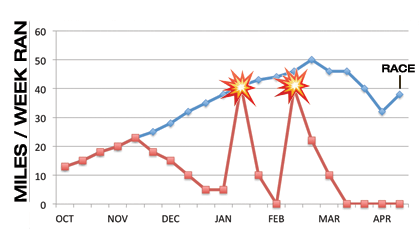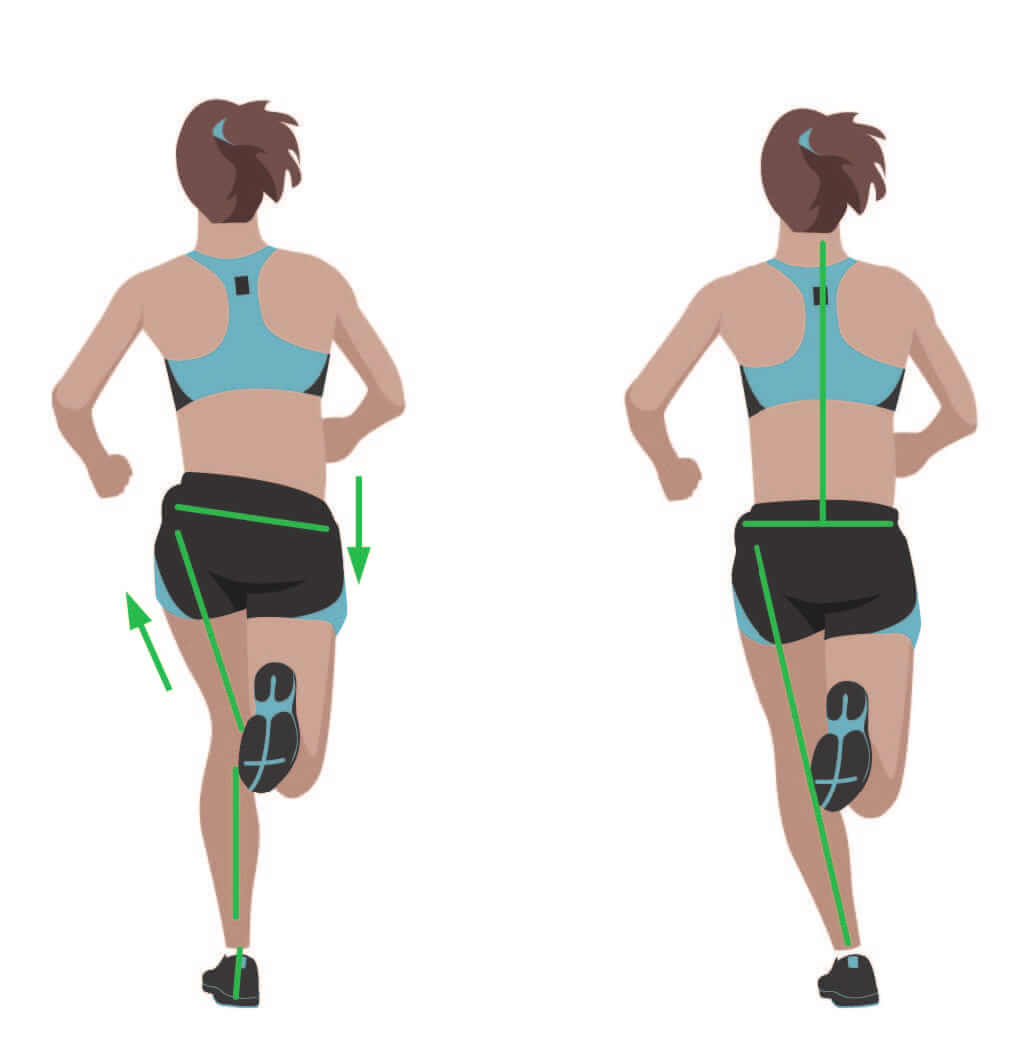If you’re training for your first marathon, or have had trouble getting to the start line pain-free in the past, here are 4 pitfalls to avoid. They’re 4 of the common reasons people pick up foot and leg injuries during their training.
 Eager marathon participants often have a cracking start to their training for a Spring marathon. Then November and December arrive, with poor weather and an abundance of Christmas and New Year parties, and bring their training and fitness skidding to a halt.
Eager marathon participants often have a cracking start to their training for a Spring marathon. Then November and December arrive, with poor weather and an abundance of Christmas and New Year parties, and bring their training and fitness skidding to a halt.
In January, these runners regain the running bug and try to pick up where they left off, resulting in a sudden spike of running volume. This sudden influx on a deconditioned body is a sure fire way to get injured.
The average “marathon cycle” – a term covering the training and the event itself – has some surprisingly strenuous numbers associated with it:

These figures extrapolate to a whopping 2 million strides per marathon cycle.
With 2 million steps, even the slightest biomechanical abnormality or weakness is likely to cause an overuse injury somewhere in your foot, ankle or lower leg.
Abnormal biomechanics tension the soft tissues of the limb differently, causing them to excessively stretch or flick over bony prominences. Continuous tension or prolonged flicking of these tissues causes them to get irritated, painful, swollen and generally quite angry.
You have to be strong to run for the time required for a marathon. Really strong. Your muscles need to be able to propel your body along undulating terrain for 4-5 hours. Those who are fresh-faced to marathon training are unlikely to have the baseline strength or endurance for this feat, and most will seldom consider any resistance training alongside their running routines.
When the cumulative demands on a tendon or muscle exceed its capacity, this is when muscle tears and tendinopathies occur. Most good training programmes strongly recommend cross-training to mix up the demands placed on the body for this exact reason. Strength is key to making sure you aren’t going to crumble during the race.
In England, we aren’t blessed with the greatest weather in the world. From September to April, we only have an average of 10 hours sunlight per day. As well as making us feel more chipper, sunlight also provides us with a healthy dose of vitamin D, which contributes to maintaining bone health and density.
During Daylight Saving hours most of us have lower vitamin D levels and have no problems. But this deficiency in someone who’s training for a marathon can cause a lot of trouble.
Lack of vitamin D can predispose you to a stress response or bone-bruising like symptoms because the bone isn’t repairing itself quickly enough after a long run. These stressed areas can rapidly become stress fractures, ruining your marathon hopes for the year. So, eat well and top up your vitamin D.
We offer gait analysis and can design a strength training programme to complement your marathon training programme. We’re also here to sort out any niggles you develop as you increase your mileage. When you’re training for a marathon, the sooner you have something sorted out, the better. Contact us to book a physio appointment.